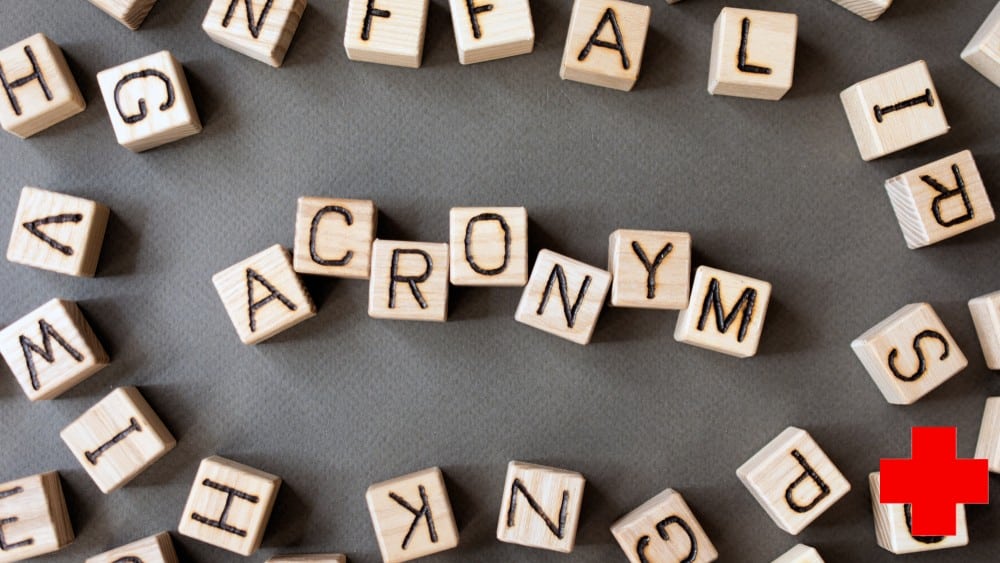Other Free CNA Study Guides:
There are 3 Modules in CNA Study Guide. Here you can navigate all the CNA Study guide modules.
- CNA Module 1 | Nursing Physical Care Skills
- CNA Module 2 | Psychosocial care skills
- CNA Module 3 | The Nurse aides role
Let’s get started right away.
When we talk about Nursing Physical Care Skills, there are many areas to touch on. Check out our CNA Study Guide Module 1.
Hygiene
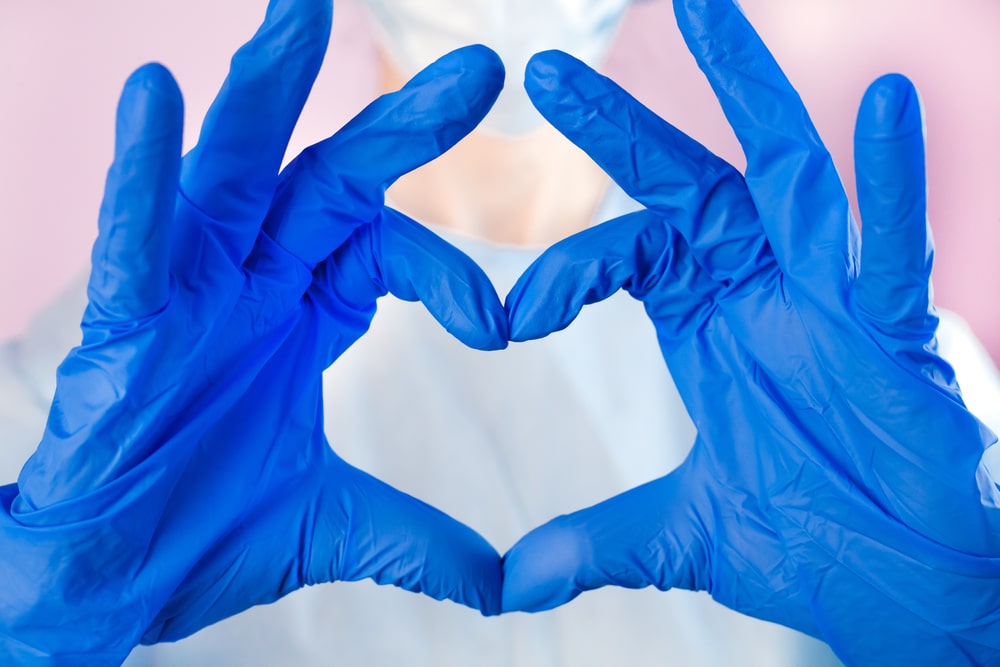
We begin by looking at hygiene which includes numerous aspects that should be taken into account.
Morning and hours of sleep care
Before any medical procedures that a patient will undergo during the day, it’s best to carry out morning care.
This includes:
- Bathing
- Shaving
- Dressing
- Brushing their hair
- Brushing their teeth
It can include nail care when needed, while bed linens are also generally changed during this time, if necessary.
Hours of sleep care
This takes place before a patient goes to sleep in the evening.
This isn’t as thorough as morning care but will involve some washing, mainly the hands and face of the patient.
The patient’s teeth must be cleaned as well.
There are other activities that can be carried out during this period, depending on the activity level of the patient and their overall health.
Caring for a patient’s hair
There’s no denying that ensuring that a patient’s hair is cared for can help not only improve their comfort, but will boost their morale as well.
It has medical benefits too, as it stimulates the scalp’s blood circulation, while bacteria and oils are removed when hair is washed.
There are factors that govern hair care, however, including how oily the hair gets, or how dry the scalp is.
Any abnormalities, such as excessive dandruff will need to be reported.
If they occur a special procedure might be needed when performing hair care if this is the case.
We won’t go through it step-by-step here, but make sure you know the procedure when it comes to patient hair care.
Caring for a patient’s nails
Nail care plays a critical role in overall hygiene and helps to remove bacteria which stops the proliferation of microorganisms.
The risk of any infection is significantly reduced by regular nail care as nails are kept short and will never be jagged and sharp which could break the skin.
Nail care also allows a nurse to check nails for fungal growth or inflammation and this should be reported immediately if any signs are found.
During nail care, precautions should be taken, especially for specific patients.
These include:
- Anticoagulant therapy patients
- Diabetics or other patients that have reduced circulation to their feet
For the second group, a nurse aide should not be performing nail care as any accidental cuts or damage to the skin can lead to serious ulcers.
We won’t go through it step-by-step here, but make sure you know the procedure when it comes to patient nail care.
Oral care
Proper oral care is a necessity for all patients and can help find any abnormalities that might occur in their oral mucosa.
Here, you are looking for bleeding, sores, or redness in the mouth and on the lips.
Note any odors too, as this could indicate an infection, for example, thrush.
Indications of thrush could also include the gums or tongue being covered in white patches while the patient might mention that their mouth has a thick furry feeling.
We won’t go through it step-by-step here, but make sure you know the procedure when it comes to oral care for both unconscious and conscious patients as well as how to carry out denture care.
Bathing patients
Should a patient not be bathed regularly, rashes can occur on their skin which can also break down a well.
If these are not dealt with a patient might be exposed to bacteria which could cause an infection because of scratching the itchy areas.
There are other goals when it comes to bathing a patient, however.
That’s because it affords the chance to carry out a thorough examination of the skin as well as helping to increase circulation while also relaxing the patient.
While performing the skin examination during the bathing period, should anything abnormal be detected, it should be reported promptly.
Dry skin should also be dealt with as should this be left alone, it could end up cracking.
When it comes to bathing patients, there are a few methods that can be used including:
- Tub bath (for a patient that is able to get in and out of the bathtub)
- Bed bath (cleaning the patient’s skin and changing their bed linen)
- Partial bath (cleaning parts of the body that have been soiled)
You should know all the procedures for these different types of baths that can be carried out on a patient.
When bathing a patient, perineal care is a critical part of the process and when carried out in a proper manner, lowers the risk of an infection of the urinary tract.
Generally, this is carried out during a complete bath of the patient but should also be done for incontinent patients.
As part of the bathing process, certain procedures can be carried out to help prevent a patient from developing a skin irritation.
Here’s what you should remember:
- If a patient has soiled themselves, if the area is not completely cleaned, a skin irritation will likely develop. Therefore, it’s critical to ensure that the patient is cleaned up properly due to the acidic nature of urine and stools.
- To create a barrier that can stop the skin from breaking down and help prevent rashes, you can apply a water-resistant lotion to the skin.
- Skin breakdown can also be prevented by changing the position of the patient often. If a patient is bedridden, their position should be changed at least every two hours.
Grooming and dressing
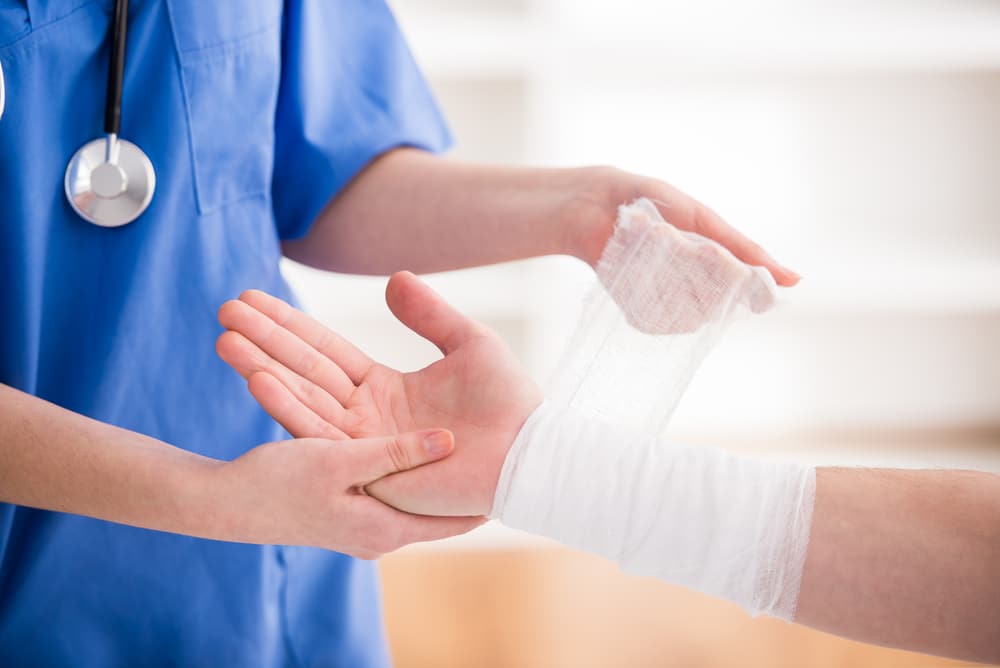
In this section we look at patient grooming, dressing as well as activities of daily living (ADLs).
Grooming, dressing, and ADLs
The tasks that are necessary to help keep a patient functional and healthy are called ADLs and we use them to determine the level of a patient’s health.
ADLs are broken down into two groups:
- Basic: These include tasks that patients perform themselves like walking, going to the toilet, dressing, bathing, or eating their food.
- Instrumental: In order to live independently, people should be able to carry out these ADLs. They include tasks such as housework, management of medication, handling money, shopping, and cooking for example.
A basic activity of daily living includes the likes of being able to dress and groom oneself and a nursing aide will be required should a patient not be able to carry out these tasks.
Dressing a patient who has had a stroke
There will generally be a weakness in one side of the body of a patient that has had a stroke and so when dressing, they will require assistance.
The idea here is to give them confidence while helping them as well as to ensure that they are safe during dressing and don’t run the risk of a fall.
This means that everything needed should be easily accessible, for example, when a patient undresses, the clothes they are going to put on should be nearby.
Also, the patient should be taught that the weaker side of the body must be attended to first while if they are undressing, it’s the other way around.
Shaving
Always wear a pair of gloves when shaving a patient.
We won’t go through the exact procedure here, but remember to always keep the skin moist, and most important of all, don’t use a razor that’s blunt.
Hydration and nutrition

We move on to the importance of hydration, and nutrition for patients.
Nutrients
We all need nutrients to live and that’s even more so for someone in a hospital that’s trying to recover from an illness or operation.
We derive these nutrients from food and they comprise five different groups:
- Carbohydrates: The main energy source for our bodies
- Protein: Made up of amino acids, protein is necessary to repair tissue
- Fats: This helps with thermoregulation and keeps cell membrane integrity intact.
- Minerals and vitamins: Used by many body processes but critical in helping metabolism too
- Water: Used by many body processes
Water
We all know how critical maintaining our water intake is.
The role of water in our bodies includes regulating our body temperature, assisting metabolism, and eliminating waste.
Through exhalation, elimination as well as sweating, our body loses water all the time.
Water loss can increase in certain situations.
The most obvious is when we up our activity, for example, exercise, but illness can add to water loss as well.
As a way to replace any body fluids that they might lose, patients should drink between 1500-2000 mL of water each day.
Always look out for signs of dehydration and up the water of any patient that shows them.
Patient feeding
The first critical step when feeding a patient is to see that they get the right food tray and this is easily done by checking the details on it against the patient’s name and room number.
This is particularly important in patients with certain dietary requirements.
Based on individual patient needs, feeding assistance might be required.
For those that can feed themselves, let them go ahead and eat as it helps to foster independence.
Some patients might need drinks to be opened for them, or food to be cut into bite-sized pieces, while others might require verbal cues to help them eat, for example, a blind patient.
If helping a patient while eating, always make sure they have chewed their food properly and then swallowed it before offering them the next helping.
While we won’t cover it in detail here, make sure you know the steps involved in feeding a patient.
We will discuss the clock feeding method used for visually impaired patients.
Here, a patient is able to feed themselves as the nursing aide describes the placement of the food on their plate.
Simply position the food at corresponding numbers on a clock face.
For example, you might place the meat in the 12 o’clock position, the vegetables in the 6 o’clock position, and the fruit at 9 o’clock, as an example.
It’s up to you how you place it but make sure you use the same pattern for all meals for a specific patient.
When a patient has finished eating, there are certain tasks that should be carried out.
Start by taking the tray from the patient and looking to see how much food they ate, which is especially important for a patient that’s on a calorie count diet.
Also determine how much fluid they took in if their input and output is recorded.
All findings should always be reported to the nurse.
Fluid intake
We’ve brushed on this earlier, but dehydration can be life-threatening to a patient.
Simply put, should a patient become dehydrated, they don’t have enough water in their body for it to carry out its function properly.
Dehydrated patients will have mucous membranes that are very dry and may have sunken eyes as well.
Their skin too has less elasticity than it ordinarily would have.
Most of them will mention that they are thirsty constantly and that they feel weak.
Other medical signs of dehydration can include an elevated pulse and a drop in their blood pressure readings.
Because their kidneys are trying to hold onto the water that’s left in their bodies, when they urinate, it will be far darker than usual.
Let’s talk about what causes dehydration.
It’s not only too little water intake that can cause dehydration but too much output by the body too.
If a patient has difficulty swallowing or is vomiting, then limited intake is the most obvious cause.
Confused patients or those kept NPO might also not take in the required amount of liquid per day.
In terms of dehydration caused by too much output, the most obvious reason is diarrhea.
There could be other reasons too.
For example, a patient that sweats excessively as a result of fever can become dehydrated if they don’t keep up their fluid intake.
Also, fluid loss as a result of burns could cause dehydration and so could hemorrhages or blood loss following surgery.
It’s critical to encourage fluid intake when dealing with patients that are dehydrated.
This is crucial to help restore the correct fluid balance in their system.
Always leave water close to the patient and explain to them the critical need for them to drink the water that’s available.
You should encourage them each time you make a visit to their room and ask their family to motivate them too.
Water isn’t the only fluid that can help with dehydration, so make sure patients also take in some fruit juice and coffee or tea (decaffeinated).
Liquids that don’t really quench thirst, for example, soda with sugar or those with caffeine in them, shouldn’t be taken in by the patient.
Therapeutic diets
Let’s talk about NPO, clear liquid, and mechanical soft diets.
When we speak of NPO, it means nothing by mouth, so the patient is not allowed to eat.
This is usually instilled before they are going to undertake a surgical procedure or some sort of medical test is going to be carried out.
Patients that are sedated, unable to swallow effectively, and those that have been intubated will also have an NPO status.
When taken off NPO, patients usually move to a clear liquid diet.
This is used so that they won’t experience any nausea when they start eating again.
When patients have trouble chewing their food, for example, those with dentures, they will be put on a mechanical soft diet.
This is also a step for patients moving from NPO to a regular diet.
Patients might also be on diets that are related to their condition.
These include calorie count diets, where they have a specific intake of calories per day, a low sodium diet for those with hypertension or renal impairment, or a cardiac diet for those with cardiac problems.
Aspiration
When a patient is helpless, the risk of them aspirating food is high.
What happens when this occurs?
Well, the trachea will see traces of water or food move down it where eventually it reaches the patient’s lungs.
Indications that this is happening could include:
- The patient speaking with a wet-sounding voice after swallowing food
- The patient coughing forcefully after swallowing food
- While trying to swallow, the patient moves their head
- The patient has difficult breathing
- While eating the patient drools
- The patient keeps food in their cheeks
Also, patients could be aspirating if they chew on their food over an extended period or if they need several attempts at swallowing the food to get it down.
Any of these signs should be reported to the nurse of the patient right away.
What precautions can be taken against aspiration?
To start, the head of the bed must be positioned at a 90-degree angle when the patient is eating.
Also, it’s the job of the nurse aide to make sure both food and drinks are of the right consistency for the patient, depending on the type of diet they are on.
When feeding a patient, do it slowly, with small portions given to them using a spoon.
In order to stop reflux, once the meal is done, the patient should remain in an upright position for at least 30 mins.
Assuring the patient’s dietary needs are met
Patients might have both cultural and religious requests when it comes to their personal dietary needs.
These should always be noted by the nurse aid and the dietary service of the facility informed to ensure that they are met.
Always check, however, that the patient is getting the correct food based on their cultural or religious requests when taking every meal to them.
Replacement meals should be procured should this not be the case.
Elimination
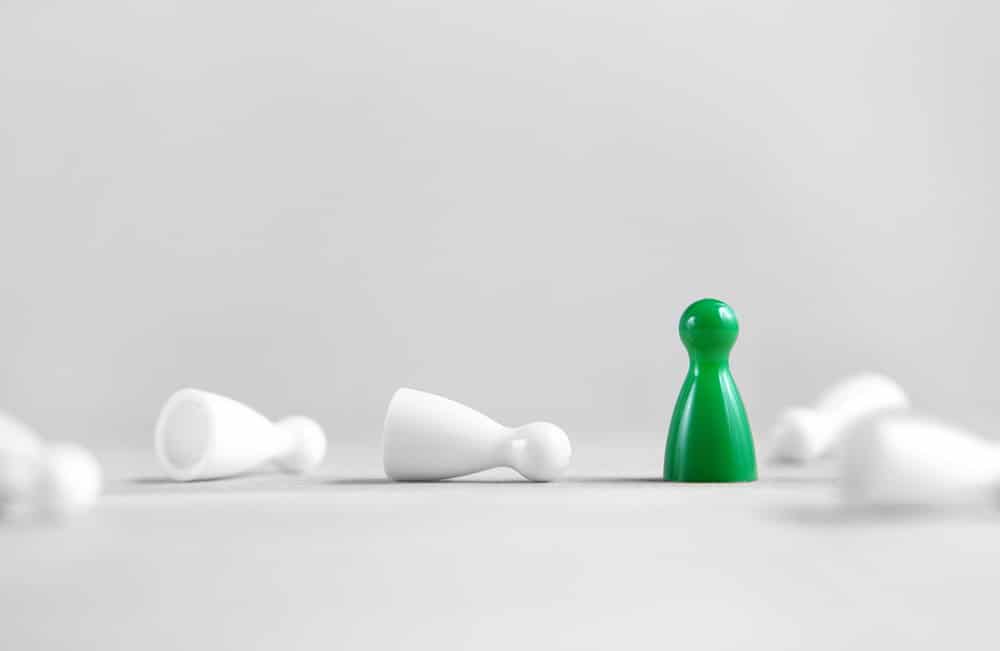
Let’s start with catheters.
Foley (indwelling) catheter
If a patient is sedated and cannot control their urination, has chronic bladder issues, or cannot completely empty their bladder, an indwelling catheter is used.
It’s also an option to prevent skin irritation in patients that are immobile or incontinent, while for critical care or post-surgery patients, catheters can be used to measure urine output.
It’s not the job of a nurse aide to place the catheter, that will be carried out by a nurse, but there’s no harm in knowing how it’s done, although you can cover that in your own time.
What you should know is that patients that have a catheter are at an increased risk when it comes to urinary tract infections.
This means that proper catheter care is critical and as soon as it can be removed, it should be.
As a nurse aide, the following findings should be reported for patients with a catheter.
They are:
- How much urine was drained? If it’s less than 30 mL per hour, the patient is not urinating enough and over 400 mL per hour (without a diuretic), they are urinating too much
- The overall appearance of the urine passed into the catheter. For example, should it be cloudy, contain sediment, if it is a strange color, blood-tinged, or smells foul, again, the nurse should be notified
- When there are complaints by the patient that their bladder feels full or they have bladder pains, the nurse should be notified
The use of bedpans
Bedbound patients that don’t have an indwelling catheter will need to make use of a bedpan.
When placing a patient on a bedpan, make sure you know the procedures to follow, which we won’t cover in exact detail here.
However, you should always ensure that the bedpan has been placed properly and make sure you wear gloves on each occasion when helping them as well as providing perineal care.
Also, patient privacy is essential, and let the patient clean their hands either with a wipe or a damp cloth.
Finally, always measure the output of the patient and then dispose of any secretions, unless there is anything abnormal that should be reported to the nurse.
Bowel movements that are abnormal
When looking after a patient, be aware of abnormal bowel movements.
Any of these that we cover below should always be mentioned to a nurse.
First, constipation.
Patients that are constipated cannot have a successful bowel movement because their stools are dry and hard.
Should this not be cleared, it could result in an obstruction of the bowel.
Constipation can happen easily because patients have decreased activity while hospitalized.
When constipated, in order to stop the stools from drying further, patients must drink more liquids, especially warm liquids but not any containing caffeine.
These will also help to ensure gastrointestinal motility is improved.
Their diet should also include plenty of high-fiber foods.
Second, diarrhea.
When a patient has diarrhea, they produce very loose and watery stools which means that the threat of them becoming dehydrated is very real.
Electrolyte imbalances can also occur as a result and if not treated, could even be life-threatening.
The most critical thing when dealing with patients that have developed diarrhea is to look for signs that they are becoming dehydrated.
The cause of diarrhea should also be determined from the collection of a stool sample.
If a patient is dehydrated, they should be encouraged to keep consuming liquids.
For every diarrhea episode, they should drink two glasses of fluid.
Always carry out the correct hand hygiene when dealing with these patients.
Third, gastrointestinal (GI) bleeding.
Any signs of GI must be communicated to the nurse of the patient straight away as this is a complication that’s very dangerous.
If a patient is suffering from upper GI tract bleeding, their stools will be dark with a tarry look to them.
Bleeding in the lower GI tract will produce stools with a bright red color.
Should the patient show any changes in mental status, develop either a rapid breathing rate or pulse or their blood pressure lowers, they might be suffering life-threatening bleeding in the form of a GI hemorrhage.
Infections of the urinary tract
When a patient finds it painful to urinate, that’s the prime symptom of a urinary tract infection.
The urine will most likely smell pretty foul as well and could be cloudy.
Many patients with these infections will need to go to the toilet often, and there’s usually little warning before the urge to urinate happens.
Other indications of a urinary tract infection could include a feeling of pressure in the pelvis region as well as pains in the flank.
Lastly, patients could have flushed skin, a higher temperature than unusual and older patients might show signs of confusion.
Urinary tract infections can be prevented in a number of ways.
First, patients should be encouraged to take in oral fluids if allowed by their current hospital diet.
One fluid, in particular, is very useful to help prevent these infections and that’s cranberry juice.
Also wash from front to back when carrying out perineal care on a female patient, while patients who can, should shower instead of taking a bath.
Bladder training
For a period of three days, a patient undergoing bladder training must keep a diary of their toilet functions.
Several approaches can be used for this training:
- Going to the toilet on a schedule
- Habit training in accordance with their toileting diary
- Prompted voiding in which patients assess their own statues and then ask to go to the toilet when necessary
- Bladder retraining in which a predetermined schedule is used (if possible)
In around 80% of cases, incontinence can be improved through bladder training.
For the exam, you should know the processes of prompted voiding and bladder retraining but we won’t cover these in depth here.
We will mention the knack as a way to control urinary incontinence.
This is simply the use of muscle contractions that are timed precisely to stop stress incontinence, for example, the urge to urinate while sneezing, coughing, laughing, or lifting something heavy, for example.
This has a success rate of 73%-98% when it comes to decreasing urinary incontinence in women.
Bowel training
Here progress is charted by keeping a bowel diary.
This will include keeping a record of:
- Scheduled defecation which should take place every day, usually around 30 mins after a meal when motility is increased
- Stimulation, for example, drinking a hot liquid. Initially, however, this might include rectal stimulation or suppositories
- Position
- If straining occurs
Exercise is also an excellent way to up the bowel’s motility, for example walking if the patient is able to, although other exercises can be used for those that are not so mobile.
When it comes to fecal impaction and constipation, there are a number of options available.
These include:
- Enemas
- Removing the impaction manually
- Upping fluid intake to at least 64 ounces each day
- Exercise
- Changing out medication that can cause constipation
- Keeping track of the patient’s diet
Comfort, resting, and sleeping
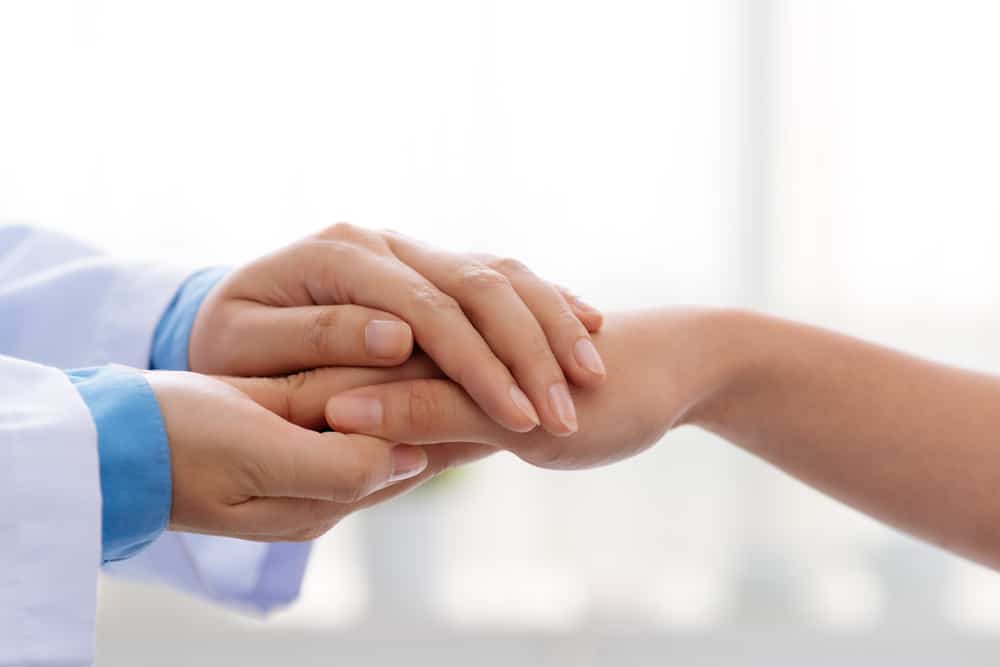
Comfort, rest, and quality sleep are essential to a patient regaining their health while hospitalized.
Making beds (both unoccupied and occupied)
When a patient is out of bed, it’s simple enough to carry out a linen change.
We won’t cover the process here, that’s something you’ll find in your course notes.
For an occupied bed, it’s obviously a little more difficult.
To start, always tell the patient what you are about to do so it won’t surprise them when you start the process.
Of critical importance here is that the privacy of the patient is respected at all times.
This starts with drawing the curtains around their bed and ensuring that their gown keeps them covered.
The full process and how it is carried out will be covered in your course notes.
Transferring patients
Let’s look at the various methods in which these are carried out.
We start with transferring to the side of the bed.
Before this is even attempted, first determine the overall strength of the patient currently.
This will help the nurse aide work out just how much assistance they will have to provide.
Also, the brakes of the bed should be in the locked position and it should be set to its lowest point.
Now, drop the side rail, and ensure that the head of the bed is raised.
The level that it is raised to should be determined as to what is comfortable for the patient.
Put your arm behind the patient’s shoulders and the other under their knees while facing them as you help them into a sitting position on the side of the bed.
Let them remain there for a few moments to ascertain if they are dizzy from the position change.
Next, we look at moving a patient from their bed to a wheelchair.
The most critical thing to ensure here is that a patient doesn’t fall.
To start, make sure both the bed and the wheelchair wheels are locked in place.
To help ensure a patient doesn’t slip, they should wear shoes or socks with rubber soles.
Tell the patient how the process will work and also check that they are not lightheaded or dizzy.
The wheelchair should be as close to the bed as possible.
Move the leg pads and footplates up and out of the way and help the patient into a wide-footed stand and a dangling position.
Now, on the count of three, the patient should stand with your support provided around their torso.
Ensure their back is facing the wheelchair by pivoting them correctly and now tell them to put their hands on the wheelchair’s armrests and move backward until they come into contact with the seat with their legs.
They can now be lowered into the sitting position and finally, help them place their legs in the leg pads and footplates.
What about moving a patient from the bed to a stretcher?
As always, start by ensuring that both the bed and stretcher are locked and at the same level.
You can use a slider board if one is available to help with the movement from the bed to the stretcher.
You will need assistance when moving the patient so that you can stand at the stretcher’s side with a colleague standing at the bedside.
The patient should then cross their arms over their chest as you hold the sheet and roll it.
This will ensure you have an excellent grip as you move the patient.
Now, using a three-count, pull the sheet towards the body while the person assisting you pushes the patient.
Continue doing this until the patient is in the center of the stretcher and they are comfortable.
Ambulating patients
While ambulating, patients may require various levels of assistance.
These are stand by assistance (SBA), contact guard assistance (CGA), minimum assistance (MIN), and maximum assistance (MAX).
SBA is required for patients who are able to move by themselves and won’t need a gait belt.
When a patient won’t need assistance to ambulate but is a falling risk, then CGA is necessary.
Here, the nurse aide won’t provide support but is close enough to the patient to touch and assist them should they stumble.
With MIN assistance, when ambulating, the patient will require minimal support but a gait belt is advisable.
MAX assistance means that in all probability, the patient cannot bear their own weight while ambulating and in most cases, should be supported by two people.
Gait belts can provide the necessary support to a patient while they are ambulating and rubber-soled slippers will help them not to slip.
It’s critical to check that a patient isn’t becoming fatigued or suffering from dizziness too.
Always move at a pace determined by the patient.
They should never be rushed and should be encouraged to rest if necessary.
Walking with crutches
To start, a physical therapist will ensure that each patient gets crutches that are adjusted exactly for them.
The nurse aide, however, should always ensure that prior to any ambulation using crutches, they are checked to see that the fit to the patient is still perfect.
This means that it’s around one-and-a-half inches below the axillary area where the pads of the crutches should be positioned.
The patient’s hips must be in line with the hand grips with their elbows slightly flexed in the standing position.
When ambulating, back strain can be limited by the patient keeping their head and shoulders erect.
Loss of balance can be prevented by the patient keeping their torso aligned with the crutches while moving.
It’s important to understand the four-point and three-point techniques for ambulation with crutches as well.
For patients with inadequate lower body strength, the four-point technique is preferred.
We won’t go into it in too much detail, but it provides a patient with three points of contact while moving.
When a patient cannot bear weight on one of their feet, the three-point technique is used and you can read up on it in your coursework.
We must also mention the swing-to and swing-through methods.
Again, this is used when a patient has decreased lower-body strength and provides a relatively quick gait.
If this is to be used with a patient, however, they will need to be relatively strong in their upper body.
Again, you can follow up on this technique in your coursework.
Also make sure you know how to transfer a patient from a seated position or in a chair to a standing position using crutches as well as from a standing to a seated position.
Using a walker to ambulate patients
A gait belt should always be worn for a patient that is using a walker to learn to ambulate.
Patients should always hold the hand grips while standing in the middle of the walker.
When moving forward, the walker should be put in a position where its back legs are in line with the toes of the patient.
The strong leg of the patient should then hold their weight as their weaker leg takes a step forward to position it in the center of the walker.
Weight is then transferred to the hand grips so the walker takes the weight as the patient moves their stronger leg forward.
Using a cane to ambulate patients
Again, if a cane is used to ambulate a patient, a gait belt is a necessity.
With the cane in their stronger hand, the patient will first step forward with their injured limb and then move the cane forward as well while keeping their weight on their stronger leg.
Once the cane is positioned, the weight is then transferred to it as the stronger leg is brought forward.
Patient positions
Knowing how to get patients into various positions depending on certain conditions or procedures is a necessity for a nursing aide.
Let’s look at them.
- A supine position sees a patient lying on their back. Their arms are always placed by their sides in this position
- A prone position has the patient turned the other way from a supine position with them now on their stomach. At their sides, their arms will be extended while they will have their head on a pillow and turned to either the left or right
- A patient is positioned on either their left or right side in a lateral position and their legs are kept straight
- Similar to the lateral position is the Sims position with the patient also on their side. The difference comes in the position of their top leg, which is now flexed and supported with a pillow, along with the topmost area
- When a patient is positioned on their back and the head of the bed is set to a 45-degree angle they are in the semi-fowler position
- When the head of the bed is set to a 90-degree angle, they are in the high-fowler position.
How to move a patient up in their hospital bed
The first rule here is never to attempt this by yourself, you will need assistance and you should always wear gloves after washing your hands first.
As always, the patient should be informed of what you are trying to do.
The head of the bed should be set in a flat position.
Take up a position at the head of the bed, towards one side with your helper in the same position, but on the other side.
Patients must now be instructed to have their arms crossed over their chest and to ensure that they keep their chin tucked in.
If they can’t do this, you should provide the necessary support using one hand placed at the back of their neck.
Now grab the sheet and get a good grip on it by rolling the edge.
Using a three count, the draw sheet is lifted and pulled forward to move the patient.
Using the logrolling technique
For patients that have spine or neck injuries, this is the technique used to move them but remember the neck should be stabilized before they are turned.
When moving them, to prevent further injury, always ensure that the head, neck, and back of the patient are kept stable through coordinated movements of the caregivers of which there must be three for this technique to be used.
As always, wash your hands and put on gloves before starting.
The position of the caregivers sees one at the head of the patient and two placed on the side you wish the patient to face.
Now grab the draw sheet before turning the patient with the caregiver at the head of the bed ensuring that the head of the patient is kept midline with their body.
Those caregivers placed on the side also must ensure that the alignment between the patient’s back and hips is kept too.
Once the necessary procedure is carried out, the patient can be moved onto their back again while keeping the head, neck, and back in alignment at all times.
One more procedure that you should know about is how to place a patient in a side-lying position but you can find that in your coursework as it’s pretty straightforward.
Range of motion exercises
When a patient is bed bound, their muscles will deteriorate should range of motion exercises (ROM) not be performed on them.
This isn’t only for patients that are weak, but also those that are sedated or even comatose.
When carrying out these ROM exercises, there are specific movements used.
We use the following terms to describe them:
- Flexion: This is when a joint is bent to decrease its angle
- Extension: This is when a joint is straightened to increase its angle
- Abduction: Here, it’s away from the trunk that movement is performed. A good example of this is moving your arm away from the side of your body to a position 90 degrees from it.
- Rotation: Here, a central axis is involved and a part of the body will pivot on it. Think of you turning your head. This is rotation
Let’s move on to how you would perform ROM on a patient.
For the most part, these will be carried out when a patient is bathed, but that’s not the only time you can do them.
To ensure that they are effective in what you are trying to achieve, each ROM exercise must be carried out at least 10 times using the following procedure:
- Before you begin, wash your hands and explain what you are going to do to the patient
- Make sure the level of the bed is at a comfortable height
- Start with the head and ask the patient to first rotate their head from one side to the next
- Moving down the body, the arms are next. Start by flexing and extending the arm at the elbow before abducting and adducting the arm. Move down to the wrist and flex and extend it too and finally, do the same to the fingers
- For the legs, ROM exercises include the knee which can be flexed and extended while the adduction and abduction of the leg should be carried out as well.
- Finish with flexing and extending the ankles and toes of the patient
Be sure to check out diagrams of these exercises which should appear in your coursework.
When we talk of ROM, it can be split into two groups: active and passive.
For active ROM, the patient can carry out the necessary activities by themselves under the instruction of a nurse aide.
With passive ROM, it’s the nurse aide who is performing the exercises for the patient who is sedated, comatose, or has muscle weakness that means they cannot do it themselves.
So how often should ROM exercises be carried out?
Well, it’s suggested that they happen at least twice per day to prevent the contraction of joints.
Should the nurse aide notice that joints are stiff or unable to move, then that could be an indication that contractures are setting in and the nurse should be notified.
Another thing to look out for are joints that are swollen and inflamed.
In cases where patients become distressed or have trouble breathing during the ROM exercises, call the nurse right away.
Body mechanics
To start this section, we will need to talk about proper body mechanics.
To avoid injury or strain on muscles, it involves the use of the appropriate muscle groups when completing tasks.
Did you know that healthcare workers have one of the highest incidences of muscle injuries from work-related incidents?
Just think about it.
They are often working with patients and moving, lifting, turning, and repositioning them.
If not done correctly, you can easily sustain a muscular injury.
To stop the chance of sustaining these injuries, four basic principles of body mechanics should be followed:
- To start, always maintain a proper center of gravity. To do this, keep your back straight and bend and lift using your legs
- You should always have a wide base of support too. When lifting, this will provide enough stability, and to do so, keep one foot a little in front of the other with them around 12 inches apart
- Maintaining proper alignment is the next body mechanic principle you should remember. Remember to keep the item you are lifting close to the body and your back straight. Pivot the whole body when turning the object
- Lastly, when lifting, always maintain the correct posture. This means that your head should be kept up, your back is as straight as possible, flex your knees and keep your buttocks tucked in as far as possible
Immobility and the risk of deep vein thrombosis (DVT)
Blood clots that develop in extremities are known as DVTs.
The most common area for these to form are the legs but when a patient has an intravenous line set up, DVTs can occur in the arm.
While immobilization is the most common reason for a DVT, there are others too including:
- Tobacco use
- Infections
- Obesity
- Advanced age
What are the most common signs of a DVT?
Well, the affected extremity might become swollen and red in color while patients might feel pain as well.
DVTs are not to be trifled with.
Should the blood clot break free, it can result in a pulmonary embolism, stroke, or even a heart attack.
To alleviate DVTs, always elevate the affected extremity and make sure a nurse is notified.
Never rub or massage the affected area.
As a way to prevent blood clots in patients that are bedridden, a sequential compression device (SCD) can be used.
They should never be used on a patient that has a suspected DVT, however.
When patients have decreased activity or are recovering from surgery, they can be fitted with anti-embolism stockings or a thrombo-embolic deterrent (TED) hose.
These are tight stockings that encourage blood flow in the legs and thereby prevent clots.
We won’t cover the process for applying SCDs, TEDs, or elastic bandages to patients, but you should know them for the exam.
Pressure ulcers
When patients are bedridden, they can develop pressure ulcers.
These usually are broken down into stages:
- Stage 1: It’s over a bony ridge that an area of redness will be noted. When touched, the patient may complain of pain and the area can be warm
- Stage 2: Here, the first layer of skin would have been removed and a pink wound bed is exposed because of this
- Stage 3: This sees a full ulcer developed. The wound goes past the skin into the subcutaneous tissue and tunneling may occur. In some cases, fatty tissue could be seen as well
- Stage 4: Here, the loss of skin tissue is severe and either muscle tissue or bone can be seen
- No category: Necrotic tissue covers the wound so it cannot be assessed property to assign a stage
How can pressure ulcers be prevented?
Here are the methods you should know about:
- Reposition the patient frequently (up to every two hours) to stop the skin from breaking down
- Elevate the patient’s feet. This can stop pressure on the ankles. Never go higher than a 30-degree angle for the head of the bed. This will help reduce buttocks pressure
- Check the skin of the patient often
- Also check on their overall nutritional status. Pressure sores are common in patients who are not eating properly
Ulcers can be avoided by using either air mattresses as well as egg crate mattresses.
Both are excellent in reducing the pressure on bony ridges on the patient’s body.
What about the treatment of ulcers?
Because a patient that develops an ulcer is already in a compromised position when it comes to their health, treating ulcers can be difficult, especially getting them to heal.
Should one develop, the first key thing to remember is that it should not be allowed to develop.
This is achieved by repositioning the patient as often as possible.
In the affected area, ensure that the skin is kept not only clean, but as dry as possible.
Depending on the overall severity of the pressure sore or ulcer, a dressing can be used on the area.
Lastly, patients should be encouraged to eat properly as a way to help speed up the healing process.
Looking after patients that have contractures
Contractures – this is when muscles and tendons shorten – can be a real problem for patients that are immobile.
Treatment is necessary so as soon there is an indication of the onset of contractures, the nurse should be notified and a physical therapist will be called in.
ROM techniques are usually used to help mobilize the joint with heat therapy also applied, not only to help improve flexibility but to reduce pain.
A split that will help stretch the joint can also be used in certain cases.
Surgery is the final option should other treatments not work and in this case, the tendon is manipulated while the patient is in theater.
Edema and the prevention thereof
An overload of fluid, as well as inactivity, could see an edema occur in the extremities of a patient.
Through movement, nurse aides should encourage patients to help reduce the swelling it causes.
For immobile patients, ROM exercises can be used often in this regard, while massaging extremities using lotions is another effective method of prevention.
Note that increased edema is possible for patients with heart or kidney failure so not only their fluid intake but how much sodium they take in should be monitored.
Understanding the skills needed for basic nursing

In this section, we look at the basic nursing skills a nurse aide should have when dealing with a range of different patients.
Visually impaired patients and their care
When dealing with a patient that is visually impaired, it’s the duty of the nurse aide to familiarize themselves with what that impairment is.
When entering their room, the nurse aide should identify themselves and then always make sure they stand in the visual field of the patient during their interaction with them.
While you should allow the patient to move freely while ambulating them, providing visual clues about obstacles in their way is necessary.
Hearing impaired patients and their care
For the most part, hearing impaired patients usually have one ear where hearing is weaker.
The nurse aide should always make sure they interact with a patient on the side that they hear best from.
Again, when meeting the patient for the first time, the nurse aide should speak clearly while introducing themselves.
Facing the patient while communicating with them gives them the chance to read lips.
Limiting background noises can also help hearing impaired patients significantly.
Written messages as a way of communicating with the patient is also an option should the situation warrant it.
Patients with aphasia and their care
Due to lesions on the brain, patients with aphasia will have difficulty speaking.
These lesions can be due to a brain injury, for example, but also arise from tumors and diseases like Parkinson’s and Alzheimer’s.
Other than difficulty speaking, aphasia patients can also struggle to make sense of what a nurse aide is saying to them.
There are many forms that aphasia could take, so the nurse aide must determine which type each patient has before communicating with them in the right manner.
Patience is key here so never rush the patient, give them the time they need to communicate.
Written messages or a letter/picture board can also be used to aid communication.
Patients with mobility issues/paralysis and their care
To ensure the safety of these patients, several interventions are necessary.
These include:
- Once every two hours at least, the position of the patient must be changed. If in a bed, their back and limbs should be supported with pillows
- When turning the patient, their skin should be checked for pressure areas
- If they can do so by themselves, the patient must be shown how to change position
- To keep skin supple, lotion should be used on it
- When moving or transferring patients, the correct assistive devices should be used as well as during ambulation
- Patients should have easy access to the call button
- Patients should be assisted with eating, if necessary
- ROM exercises must be carried out each day while chairs and beds the patient occupies should have pressure-reducing devices
Patients wearing a cast and their care
The critical thing to look out for here is that the patient has proper circulation in the area that the cast covers.
The nurse aide should report to the nurse if they notice any of the following:
- Fingers and toes are cool to the touch or become bluish or pale in appearance
- Pain or numbness is felt by the patient in the area covered by the cast. This could indicate poor circulation as well as nerve damage
- If the patient feels a burning sensation under the cast, or a foul smell emanates from it. This could be as a result of an infection
Helping with pain management
The start of helping a patient with pain management comes in the understanding of nonverbal and verbal pain expressions or overall discomfort.
When noticing this, the nurse aide should report them to a nurse as soon as possible.
Methods can be used to help alleviate discomfort through various comfort techniques including:
- Requesting from the patient what can be done to help their comfort levels
- Often changing the patient’s position and using pillows or bolster to provide support for their limbs
- Ensure that the patient is warm enough
- Massage the back of the patient
- Provide ways in which they can relax, for example, television
- Provide other distractions (games, playing cards, puzzles)
- Use visualization and relaxation techniques to assist the patient
Controlling infections

Effective infection control is vital in a hospital and that’s what we are going to cover now.
Localized and systemic infections
Let’s look at the following two groups: localized and systemic infections.
Localized infection
It’s in a small area of the body that this infection will occur as a result of a virus or bacteria growth.
The most common areas where you will find a localized infection are those where surgery has been performed, or in the wounds a patient has suffered.
The area of a localized infection can be warm to the touch, while the skin will usually be red in color.
In some situations, the area might be swollen while a foul-smelling drainage could occur.
The patient can suffer from a fever too.
Systemic infection
Here, either a virus or bacteria has caused an infection throughout the body after it gained access to the bloodstream of the patient.
The signs of this kind of infection include the following:
- Fever or chills
- General malaise
- Vomiting
- Weakness
- Nausea
If not treated quickly, this can lead to sepsis which is life threatening.
Bacterial and viral infections
Now let’s look at the difference between a bacterial and viral infection.
Bacterial infections
With a bacterial infection, the body has taken on some form of bacteria which then begins to multiply.
This will lead to an infection but generally, this is localized.
An excellent example of this is a throat infection, for example, where one side of the throat is infected more than the other, which means it causes more pain.
To deal with the infection, antibiotics are usually prescribed.
Viral infections
Here, it’s through the mucous membranes that a virus will invade the body where it attaches to cells and produces more of itself.
For the most part, this is fought by buffing up the immune system to fight back, although some antiviral medications do exist.
If the viral infection is very serious, there might be a vaccination produced for it, for example, as was the case with Covid-19.
Other examples of vaccinations for viruses include those produced for polio, mumps, and rubella.
Microorganisms and the transmission thereof
So that they can continue to survive, a microorganism will swap one host for the next.
The actual transmission thereof can take place in a number of ways including:
- As droplets, for example, when someone sneezes
- Through direct oral contact
- Through iatrogenic transmission like during a surgery
- Rarely does it happen, but they can find a new host through the fecal-oral route due to poor hygiene, for example
What precautions can be taken?
Treat all patient secretions as if they are carrying something harmful.
A nurse aide should never come into contact with them on their bare skin and should wear the correct PPE at all times.
Also, if a work surface has been contaminated, it should always be cleaned with a strong disinfectant as soon as possible.
Washing of hands
Because microorganisms can be found on any surface, one of the first lines of defense we have against germs is washing our hands.
This is especially necessary in a medical environment where the people a nurse aide will work with already have compromised immune systems.
In fact, when it comes to infection control, hand washing with warm water and antimicrobial soap is key.
While we won’t cover it here, you should know the proper procedure when it comes to hand washing and which you will find in your coursework.
What about alcohol-based sanitizers?
Well, they should never replace hand washing at all, but can be used in conjunction with it as a way to ensure germs and bacteria aren’t transmitted to patients.
PPE
There are various types of PPE that a nurse aide will have access to and these include:
- Gloves
- Gowns
- Face protection (facemasks, googles, face shields)
A nurse aide should not only know when these are to be used but also how to use them effectively.
This includes how to equip them as well as take them off and dispose of them correctly.
How to change linens safely
Whenever changing linens, gloves should be worn by the nurse aide and care should be taken so the linens themselves are not held close to the body.
Should the linens have been soiled, never shake them out.
The main reason for this is that through that action, the surrounding air could have germs released into it.
Washing hands is a necessity after dealing with soiled linens, even if the nurse aide was wearing gloves.
Patients in isolation
In an effort to prevent the spread of germs through a medical facility, patients that have an infectious disease could be placed in isolation.
This could also be the case if they carry a bacteria that has proved to be particularly resistant to medication.
Nurse aides that attend to these patients will have to wear PPE, for example, gloves, masks as well as an isolation gown.
Various precautions could be in effect when a patient is in isolation and include:
- Contact precautions: Here, the microorganism can be spread by direct contact so the nurse aide must wear an isolation gown and gloves
- Droplet precautions: It’s via respiratory or mucous secretions that microorganisms are spread and these precautions try to limit that. As for PPE, well a nurse aide should wear a mask and gloves at all times
- Airborne precautions: Here microorganisms are spread in the air, so a patient is put in a room that has negative air pressure. Either a respirator or N95 mask should be worn by the nurse aide as well as gloves when working with these patients
Maintaining equipment
Patient care equipment must be evaluated for the level of risk for infection from the patient.
This helps to determine how it should be dealt with from a cleaning perspective before it is used.
Let’s look at specific examples:
- Noncritical/low-risk items: These pieces of equipment have touched the skin of a patient, for example, a stethoscope. Walls and countertops are also included. Here, a detergent can be used for cleaning before the equipment is going to be used
- Semi-critical/intermediate-risk items: While these won’t penetrate the skin of a patient, they will come into close contact with their mucous membranes. This will include respiratory equipment, thermometers, and others. Before use, these should always be cleaned with a high-level disinfectant
- Critical/high-risk items: These items will penetrate the skin of a patient and include surgical equipment. Because they are a high risk for contamination, they should always be sterilized before use
We won’t be covering it in this guide as it will be in your coursework but you should know the process for cleaning, disinfecting, and sterilizing equipment.
The safety of patients
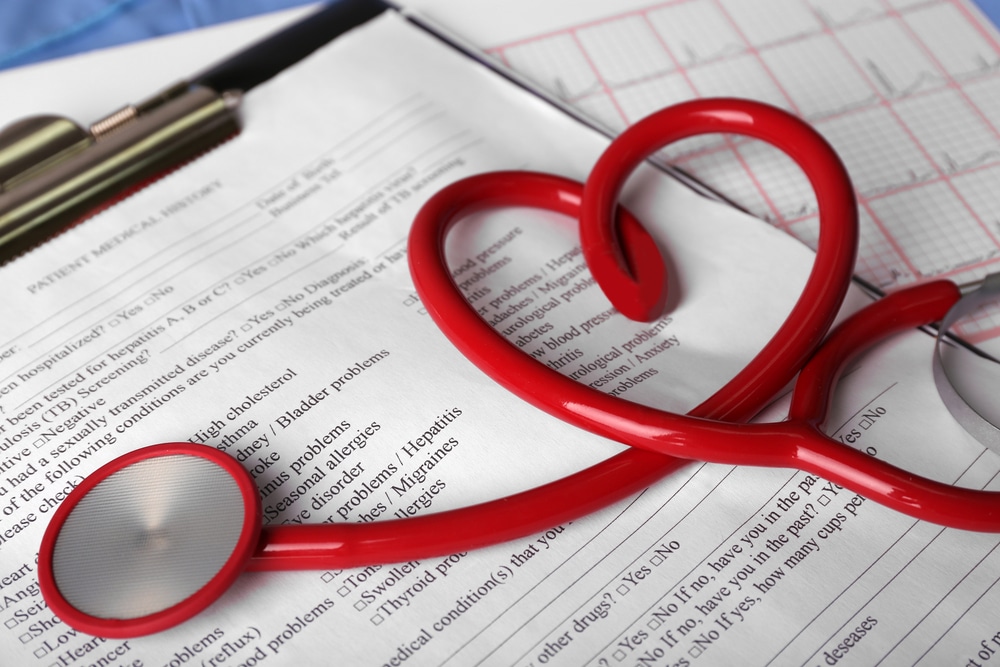
One of the key things to focus on when a patient is in hospital is their safety.
That’s what we will look at in this section.
Falling
In the healthcare environment, falling is a real concern for a patient, especially those that are not as mobile as they once were.
Also, falling in older patients can result in broken bones as their bone density is lower than younger patients.
This could lead to a loss of independence overall and generally, that means a decline in their health as well as the possibility that they cannot live alone and unassisted anymore.
Of course, with the proper preventative measures and precautions in place, the chance of a patient falling can be reduced significantly.
Let’s look at these in more detail.
To start, the needs of the patient should be identified.
If they are a fall risk and have special mobility needs, this information should be placed on the door of their room.
At all times, their bed should have both rails up so they cannot fall out of it.
Also, when a patient is to stand, before they do so, they should sit on the side of the bed to ensure that any dizziness they may experience, subsides.
Another added protection against a potential fall is to give the patient rubber-soled socks or shoes while any potential hazards on the floor, a small rug where they could slip, for example, should be removed.
What about bed bound patients and safety concerns for them?
There’s a high risk of falling with this group.
Again, the rails on both sides of the bed should always be in the upright position.
For patients that continually try to get out of bed, consider a bed alarm that will provide an alert when they try to do so.
Anything a bedridden patient might need should be placed near them including their items, the tray table as well as the call light.
A bedridden patient should have their position changed every two hours.
Toileting should be offered within this time frame as well.
Even with precautions in place, a patient may still fall while ambulating, for example, they faint or their legs give way.
So what are the techniques to follow for falling with one?
Well, the idea here for the nurse aide is not only to protect the patient, but themselves from potential harm, if possible.
This means that should something occur, the nurse aide can use their free arm, along with the gait belt to provide support for the patient.
They should be lowered to the floor, or a nearby chair, if possible.
At all times, the head of the patient must be protected.
What happens if the fall is more uncontrolled, for example, the patient loses their balance while ambulating?
Here, the nurse aide should try to provide as much support as possible but their own safety should be a consideration as well.
If falling over, before impact, the nurse aide should try not to tense their body as more injuries could result from this.
Restraints
In the world of healthcare, there are many different kinds of restraints available which include:
- Restraints of an emotional nature: This is simply using emotional as well as verbal cues to try to change the behavior of a patient
- Restraints of an environmental nature: These help limit the movement of a patient and include side rails or doors that can be locked, for example
- Restraints of a physical nature: These help restrict the movement of a patient and include movement pads, lap belts, and wrist or vest restraints
- Restraints of a chemical nature: These include medications given to a patient to help change their behavior
While restraints may seem harsh at times, they are necessary as a way to stop a patient from harming themselves, or perhaps others,
If a patient is interfering with a medical device, for example, removing their drip, restraints can be used as well.
That said, only when all other measures have been tried and failed should restraints be an option.
Also, alternatives to restraints can be considered.
These include:
- Moving a patient to an environment that is quieter
- Providing stimulation for patients that require it, like a TV or radio
- Redirecting the patient
- Checking if the patient needs to go to the toilet or is thirsty
- Seeing that the patient can easily reach personal items they may want
For the CNA exam, you should go over the ways in which restraints are applied, both vest restraints and those used on extremities.
Emergencies
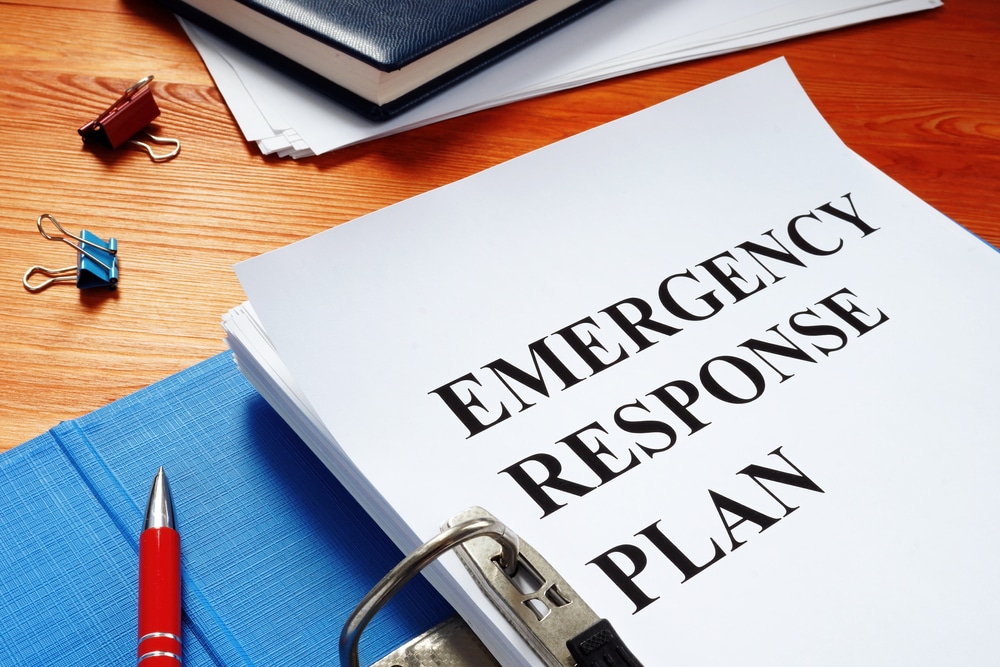
In this section, we cover emergencies that may occur in a medical facility as well as evacuation procedures amongst others.
Overall fire safety
It goes without saying that effective fire safety is critical in a medical facility and that’s because they are home to many materials that are highly flammable.
The location of shutoff valves for oxygen is something all nurse aides should know along with fire extinguishers and alarms.
Fire drills are also of critical importance in helping to understand how an evacuation takes place in the facility.
For the exam, go over the section that talks about the various types of fire extinguishers as there are generally three different ones.
Also cover the section about treatment during emergencies for burns and preventing fires by following electrical safety precautions.
Protocols regarding hospital emergencies and disaster response
Based on the Hospital Incident Command System (HICS) all facilities should have an emergency/disaster response plan in place.
This will cover the following key areas:
- Overall management of the emergency
- What responsibilities staff have
- How communication will take place during the emergency
Emergencies can come in many guises, from a massive vehicle pile up to injuries from a severe building fire or even an event at the medical facility itself.
The response plan should include the following:
- Drills that cover disaster preparedness
- How the plan will be activated as well as what responsibilities are expected from individuals
- The overall chain of command
- Damage assessment of the facility (if necessary)
- Capacity of the medical facility that will receive victims
- Triage procedures
- Staffing arrangements and how staff will be contacted to report to their stations
- Communications procedures between medical facilities
- Where receiving and treatment areas will be set up
Procedures covering evacuation
Should an incident occur in a medical facility, the disaster plan will need to include evacuation plans.
This includes the necessary routes each section should evacuate by, how patients are to be evacuated, and locations of safe staging areas.
It’s essential that clear plans are in place for non-ambulatory patients.
Acute emergency conditions

As a nurse aide, knowledge of how to deal with acute emergency situations is critical.
Overload of fluids
Always monitor a patient that has a suspected overload of fluids very closely.
What signs and symptoms would they display?
Well, the most obvious is that the patient will be in distress when breathing.
Another sign is that during breathing, crackles emanate from the bases of their lungs.
There are other signs, however, and they include:
- Edema in their extremities
- Puffy skin around their eyes
- Ascites, or abdominal fluid accumulation
- Bulging veins
- Hypertension
- Bounding pulse
Vomiting
Nurse aides should always act quickly when a patient begins to vomit in their bed, especially if they are lying down as they can easily aspirate on it.
This means turning them on their side with a receptacle provided for them to vomit into.
To clean vomit from the mouth of a patient, a suction catheter can be used.
The patient should be allowed to remain on their side until the vomiting episode is over.
Seizures
The response for a patient experiencing a seizure should be the following:
- Use the emergency light to call the nurse
- If the patient is in bed, make sure their head is lowered. If not, help them into a chair (if possible) or onto the floor
- For patients in bed, ensure the bed rails are raised as well as using a blanket to provide makeshift padding against injury
- Make sure that clothing is loose, especially around the neck of the patient
- To stop aspiration from occurring, turn the patient onto their side. Use a blanket or pillow to provide support for their head
- For patients on the floor, furniture that they could injure themselves on should be moved out of the way
- Never restrain the patient while their seizure is ongoing
- Never place anything in their mouth while their seizure is ongoing
- Ensure the patient has as much privacy as possible
- Cover the patient with a blanket once the seizure has passed
Emergencies of a diabetic nature
Patients with diabetes, be it type 1 or type 2 are at risk of three situations that will be described below.
Hypoglycemia
This sees blood sugar levels drop to dangerously low levels because of a patient taking too much insulin.
Symptoms include:
- Trembling
- Clammy, cold skin
- Blurred vision
- Numbness
As the first line of treatment, the patient should be given something that will raise their blood sugar levels, such as fruit juice or a sweet.
Hyperglycemia
This sees blood sugar levels rise significantly.
Symptoms include:
- Excessive thirst
- Increase urination
- Drowsiness
- Nausea
- Shortness of breath
- Breath that has a fruity smell
Patients that are having a hyperglycemic episode will require insulin but this can only be given to them on the orders of a nurse or doctor.
Ketoacidosis
This sees blood sugar levels rise even more than they would during a hyperglycemic episode.
This is as a result of ketones causing acidosis because fat has been broken down for fuel.
Symptoms include all of those associated with hyperglycemia
- An abnormal pulse
- Hyperventilation
Patients will require insulin as prescribed by the nurse or doctor as well as fluids.
Acute bleeding
There are many reasons that a patient may suffer from acute bleeding, which manifests itself as bright red blood in large volumes.
While external bleeding is easier to notice, this can occur internally as well.
Symptoms of internal bleeding include:
- Blood pressure dropping lower than usual
- Increased pulse
- Increased breathing rate
- An altered state of mind
With both internal and external acute bleeding, the nurse should always be called and the necessary PPE should be worn to prevent skin contact with the blood.
When it comes to acute bleeding, a nurse aide should know how to deal with a bleeding wound, acute nose bleeds, and those that occur internally, amongst others.
Keep the patient warm and never give them fluids or something to eat.
Excessive blood loss could see the patient go into shock, so it’s necessary to keep a close eye on their vital signs.
Chest pains
Before the nurse aide elevates and assists a patient complaining of chest pains, they should first call a nurse.
Next, loosen their clothing and start to measure their respirations as well as their pulse.
Also measure their oxygen saturation and blood pressure if possible.
Information is key here and while waiting for help to arrive, a nurse aide can ask a patient for specific details.
This includes when the pain started, where it’s located, and how it feels.
At no time should the patient be given any liquid or food.
Cardiac arrest
The most crucial thing when treating a patient that’s unresponsive is time.
As usual, call for help and then start to examine the patient by seeing if they are breathing.
The nurse aide can also check their pulse.
A patient is experiencing cardiac arrest when they do not have a pulse.
If help has not arrived, a code blue call is necessary.
Patients in hospital beds should have their heads lowered and be prepared for CPR.
This means placing a backboard if nearby as well as starting to loosen clothing.
For patients that are not in a bed but on a chair, the nurse aide should attempt to place them in a supine position on the floor.
Should no help have arrived, the patient is in the proper position and the nurse aide has the correct training, chest compressions can begin.
We won’t get into details regarding this as it is covered in your coursework.
Choking
Usually, a patient will use visual cues to show that they are choking.
If a patient cannot make a noise or speak and are still conscious, the Heimlich maneuver should be used to help them.
We won’t cover it in detail here as it appears in your coursework.
For patients that lose consciousness, treatment should be as per if they have suffered cardiac arrest.
Code situations: The responsibility of a nurse aide
In order to ensure the patient receives the best treatment possible, a health team must work together, each within their own responsibilities.
Nurse aides should know what theirs is, even prior to a specific code situation as well as how to activate it.
The primary job of a nurse aide is to ensure the right equipment is available once a team is working on a patient.
For those with CPR training, relief CPR work is also a possibility.
Safety when administering oxygen
While we won’t go into extensive detail here, as it is covered in the coursework, a nurse aide must always ensure the safety of a patient that is receiving oxygen.
Providing care to dying patients
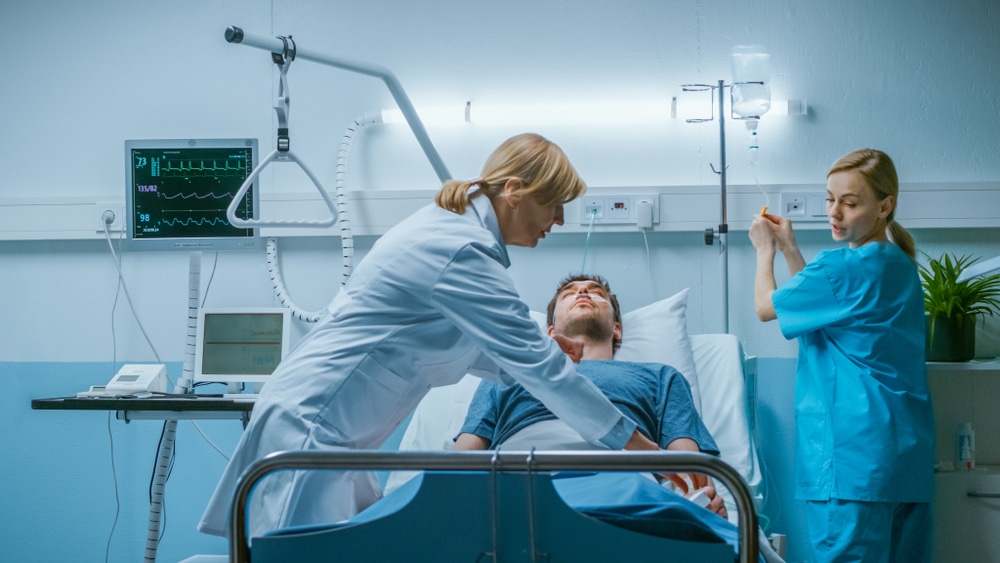
While this is never easy, it’s something a nurse aide will come across often during their career.
Hospice care
Patients with a terminal illness will enter hospice care when approaching the end of their lives.
This can be given to them in a specialist facility, at a hospital, or even at home.
Here, the main aim is to provide pain management and make the patient comfortable although psychological and spiritual support is also provided.
Terminally ill patients generally will go through four stages of grief:
- Denial
- Anger
- Bargaining
- Acceptance
Being mindful of these stages will help when it comes to caring for them.
Caring for a patient that is dying
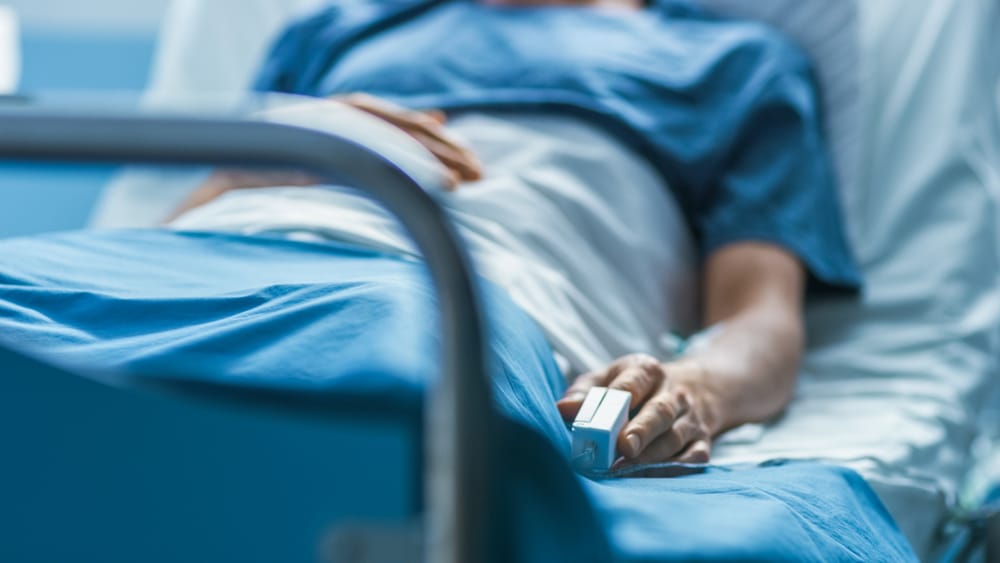
As often as they need it, patient care is essential here.
For example, even if family is present, the nurse aide should not be worried about carrying out their necessary duties, for example, bathing the patient.
This means asking the family to leave so that duties can be performed unless a patient says they can stay.
Every two hours, the nurse aide should also provide oral care to the patient.
Patients should be turned every two hours as well, but for those that would experience excessive pain while doing so, this might not be necessary.
A nurse aide has specific priorities that should be adhered to when dealing with an actively dying patient.
Perhaps the most critical is that their pain levels are kept as low as possible.
A nurse should be called immediately should the patient complain of any pain.
The next critical thing is their overall comfort.
Carry out any requests they may have (within reason), let them eat and drink and give emotional support to not only the patient, but their family.
Imminent death: Signs and symptoms
When a patient is close to death, their vital signs will change significantly.
To start, there is a significant slowing of their heart rate and it may be irregular while their pulse will be extremely weak.
As for their breathing, well that will be very shallow and infrequent.
It might even include a rattling sound which is as a result of mucus found in their respiratory tract.
Lastly, their temperature will drop, along with their blood pressure as they eventually pass away.
Rigor mortis
Once a patient has died, rigor mortis sets in.
This means that the muscles will stiffen and the limbs of the deceased are then extremely inflexible.
This occurs after the patient has died and can continue for a period of up to four days afterwards as muscle tissue breaks down, which is the reason why they stiffen.
Because of this muscle stiffening, the deceased body can become stuck in position.
For this reason, as soon as they have passed away, they should be placed in a supine position.
Postmortem care
This involves ensuring that the body is properly prepared so it can then be taken to the morgue.
At all times, the utmost respect should be at the forefront of the nurse aide’s mind when treating the body of the deceased, so the first thing to do is to ensure everything is done behind curtains.
Dentures should be placed in a patient’s mouth, where applicable, and their eyes should also be closed (if open).
Next, give the body a thorough wash using the same procedure as a bed bath, and then dress the patient in a new hospital gown with a pad over the perineal area.
If the patient is still attached to any drips, tubes, or machines, remove them and dress the areas where there may have been a line insertion.
The body of the patient is then placed in a plastic body bag which is tucked underneath them and then the patient is labeled before they are placed on a morgue cart.
Technical and therapeutic procedures
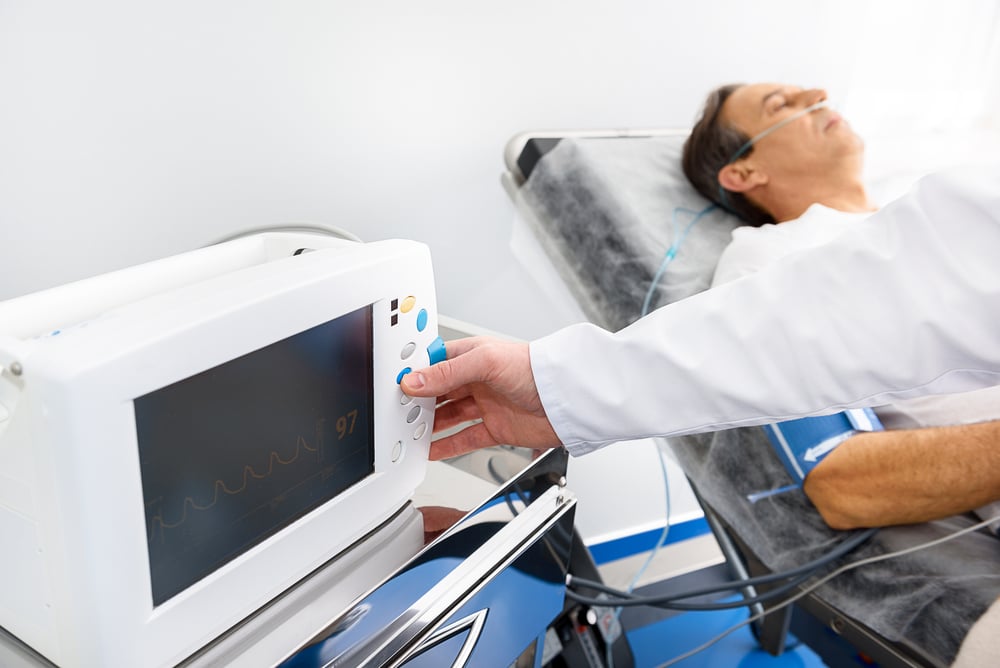
Let’s look at a number of technical and therapeutic procedures that nurse aides will need to know.
Intake, output measuring
Intake and output (I&O) is an important measure of the fluid balance in the body of a patient and it’s taken in milliliters (mL).
To measure intake, take note of all the fluid taken in both intravenously and orally by the patient.
Output includes measuring anything the patient excretes, for example, emesis, urine, and stools.
The overall fluid status of a patient can be calculated by measuring both of these variables over the course of a few days.
What you want is for there to be a balance between input and output.
In other words, they should be similar.
A patient is considered to be fluid overloaded when intake surpasses output and dehydrated should the opposite occur.
The methods for measuring intake and output are something you should know for the exam as well as how the calculation takes place.
Measuring vital signs
If you want an excellent indication of the overall condition of a patient, their vital signs will provide this.
The most commonly measured vital signs are:
- The core body temperature of a patient
- Their heart rate (pulse)
- The number of times they breathe per minute (their respiration rate)
- Their blood pressure, which includes two measurements: systolic pressure and diastolic. Systolic pressure is a measurement of the pressure in the arteries during a heart contraction while diastolic is the measurement of artery pressure between heart contractions
- Oxygen saturation levels in the blood
- The current level of pain a patient is experiencing
Let’s look at these a little closer.
Temperature
This can be taken in a number of ways.
One of the most common is under the arm of the patient.
Start by ensuring this area is dry and then place the thermometer in the axillary area with the patient keeping it in place by keeping their arm down.
The thermometer should be kept there until such a time as it gives the patient’s temperature.
Always clean the thermometer before using it again.
A patient’s temperature can be taken orally as well.
It’s critical that when using this method, the patient should not have drunk cold or hot fluids within a 15 minute period beforehand.
The thermometer is placed under the tongue of the patient and they should always keep their mouth closed while the reading is taken.
Again, clean the thermometer before using it again.
Note that in some circumstances, temperature can be taken rectally as well.
Always use lubrication when doing so, inserting the thermometer around 1 inch into the rectum.
If a patient has a low core body temperature, they may be starting with an infection while a high temperature does indicate an infection.
Measuring pulse
Peripheral pulse is measured on the patient’s wrist through the radial artery, hence the reason it’s also called the radial pulse.
Simply count the beats for a period of 30 seconds and multiply by two for a patient with a regular heartbeat.
For those with an irregular heartbeat, count for 60 seconds.
Apical pulse is a measurement of the number of times a heart beats in a 60 second period.
This measurement is carried out with a stethoscope which is put on the left chest of the patient in the area in which their pulse can be heard the loudest.
The same rules as laid out above for measuring heart rate for patients with an irregular and normal beat are then used to count their heart rate.
What are the indicators of an abnormal pulse in a patient?
Well, for most, their pulse should be between 60 to 100 beats every minute.
Patients that are sleeping can have a low rate as well as those that are very fit, while also take note that some medications can also lower heart rates.
There are external factors that can raise heart rate including caffeine, drugs, stress, medication as well as exercise.
A patient with an underlying infection will also see their heart rate raised so these are all factors to bear in mind.
Measuring respiration rate
This is something a nurse aide carries out without informing the patient as it will provide a more accurate representation of their respiration rate.
Usually, this measurement is taken straight after checking a pulse rate by counting the number of times they breathe with one respiration measured by the rising and falling of the chest wall.
The measurement is then taken over a minute and the results recorded.
The normal rate is around 12 to 20 breaths per minute.
Measuring blood pressure
To measure blood pressure, the nurse aide will use a cuff that’s wrapped an inch above the bend of the elbow (antecubital space) with the brachial artery then covered by the stethoscope.
The cuff must then be inflated to 150-180 mmHg at which point the pressure is slowly released.
When the patient’s pulse is first heard, the reading should be recorded as the systolic indicator.
When the pulse fades, this should be recorded as the diastolic indicator.
For readings that are very low or extremely high, a second reading should be taken but this time, on the other arm.
120 mmHg is the normal systolic blood pressure reading while for diastolic, it’s 80mmHg.
Low blood pressure or hypotension will see readings of 90 (and lower) mmHg (systolic) and 60 (and lower) mmHg (diastolic).
Low blood pressure could also be an indication of bleeding, dehydration, or heart failure should the patient not normally suffer from hypotension.
High blood pressure or hypertension will see readings of 140 (and higher) mmHg (systolic) and 90 (and higher) mmHg (diastolic).
This can be caused by pain, stress, or chronic illness.
Measuring oxygen saturation
A small clip-on device is used to measure the oxygen saturation or oxyhemoglobin level in a patient.
Attached to the finger, the regular reading this device should return is anything between 95% and 100%.
Some conditions, such as COPD, will lead to lower readings.
Should the range be lower than 95% over a number of readings, the nurse aide should alert the nurse.
While these devices are useful, for patients that have poor circulation or are anemic, accurate readings might not be possible.
Measuring pain levels
The pain levels a patient is experiencing can be detailed not by only asking them, but also by closely observing them as well as asking their family.
Pain, however, will vary from patient to patient as it’s a very subjective feeling that is included by numerous physical, social, and spiritual factors.
As a way to further define the pain parameters of each patient, vital signs can play a role.
Be on the lookout for physical signs of pain that the patient may be experiencing, for example, if they guard parts of their body, or curl up in a fetal position.
Other indicators including moaning, raised speech volumes, or calling out while grimacing and other facial expressions are also an excellent indicator of the pain they may be experiencing.
Unidimensional pain assessment tools include:
- Numeric rating scale from 1 to 10, with 10 indicating severe pain
- Descriptive method with the patient choosing from mild, moderate, or severe to describe their pain
- Using a facial expression chart for children
Collecting urine and stool samples
Our focus in this section deals with collecting the sample from a catheter bag.
The main worry here is to ensure that a urinary tract infection doesn’t result from bacteria entering the foley tubing during the process.
We won’t go through the process, as that’s covered in your coursework, so you can cover it again before the exam.
The other concern with urine samples is to ensure that they are not contaminated in any way.
In some patients, you may be able to collect a urine sample in a cup.
Never start collecting at the start of their urination but tell the patient to wait a few seconds before doing so.
Stool samples need to be collected in patients who are suspected of having bleeding bowlers or an infection.
The sample can be collected using a commode and a specimen collection hat.
Only a small amount of the sample is needed to be sent away to be tested and usually, this is placed in a specimen cup.
With any urine or stool sample collections, hygiene is critical so the nurse aide should not only wear gloves, but wash their hands afterwards.
Collecting data and reporting

There’s plenty to cover in this section, so let’s jump straight in.
Nursing units: Chain of command
This will vary depending on numerous factors, but here’s an idea of what a chain of command could look like:
- Supervisor/manager: Managers the unit as well as the staff. The head nurse may hold this position
- Nurse practitioner/nurse team leader: The care of a group of patients is the responsibility of this individual. They will delegate and provide supervision for nurses and assistive personnel under them to carry out these tasks
- RN: While they can serve as a team leader in certain settings, RNs are usually members of a nursing team. Specific duties may be assigned to staff nurses, including medicating patients. When it comes to assistive personnel, they will supervise them
- LVN or LVN: These team members work under the supervision of the RN and are able to help with certain medical treatments. In some cases, they can supervise assistive personnel as well
- CNA: Under the supervision of licensed personnel, a CNA will provide individual care to patients
Data: Objective and subjective
Let’s look into the difference between data that is objective and that which is considered to be subjective.
When we think of objective data, we think of something that is considered as fact.
This includes a patient’s:
- Vital signs
- Weight
- Intake and output
It can also include aspects observed by others, for example, when two staff agree that a patient has flushed cheeks.
What about subjective data?
This isn’t fact, but instead information that comes from the patient, including how they feel, or what they think.
For example, a patient might have been admitted to hospital because they had severe diarrhea which, to start, wouldn’t have been observed by the nursing staff yet.
That’s seen as subjective data.
Charting
Charting is necessary so an accurate log of the care given to a patient as well as how they have responded is recorded.
The following is usually included:
- Vital signs
- Intake and output
- Various assessments
- Any procedures carried out
As per legal requirements when it comes to nurse aide documentation, charting must include any care activities carried out as well as any changes in the overall condition of the patient.
Reporting: Routine and urgent
When it comes to routine reporting, this covers all daily care such as bathing, mouth care, helping with activities, toileting, and exercising, for example.
With all of these, it’s not necessary for a supervisory nurse to have to intervene as the duties can be successfully carried out by the nurse aide.
When there are changes in the overall condition of a patient that requires evaluation or even treatment, then reporting becomes urgent.
Urgent reporting also covers if a patient has fallen, if they develop any skin conditions, if the patient has a specific complaint, if they exhibit difficult or dangerous behavior, if they don’t follow their diet and if they don’t cooperate.
Let’s also talk about incident reporting.
If a nurse aide has seen something for which the hospital might be considered liable at some point in the future, it should immediately be reported to a licensed nurse.
This generally pertains to some form of injury or the potential for staff, patients or visitors to be injured in some way.
For staff members, it may be a needlestick injury that should be reported immediately, as an example.
The following elements should be included when reporting these incidents:
- Name and other identifying information
- The date of the incident
- The time it took place
- The location it took place
- A description of what happened
Witnessing negligent behavior
If someone in a healthcare facility is not carrying out their tasks in the correct manner, that’s considered as negligent behavior.
Should a nurse aide witness this, they have a duty to report what they have seen to the charge nurse.
In the case where it is their charge nurse who is carrying out the negligent behavior, the nurse aide should go to the next person in the relevant chain of command to report the behavior.
A nurse aide should never talk to their colleague about their negligent behavior, it should always be reported.
Restorative skills
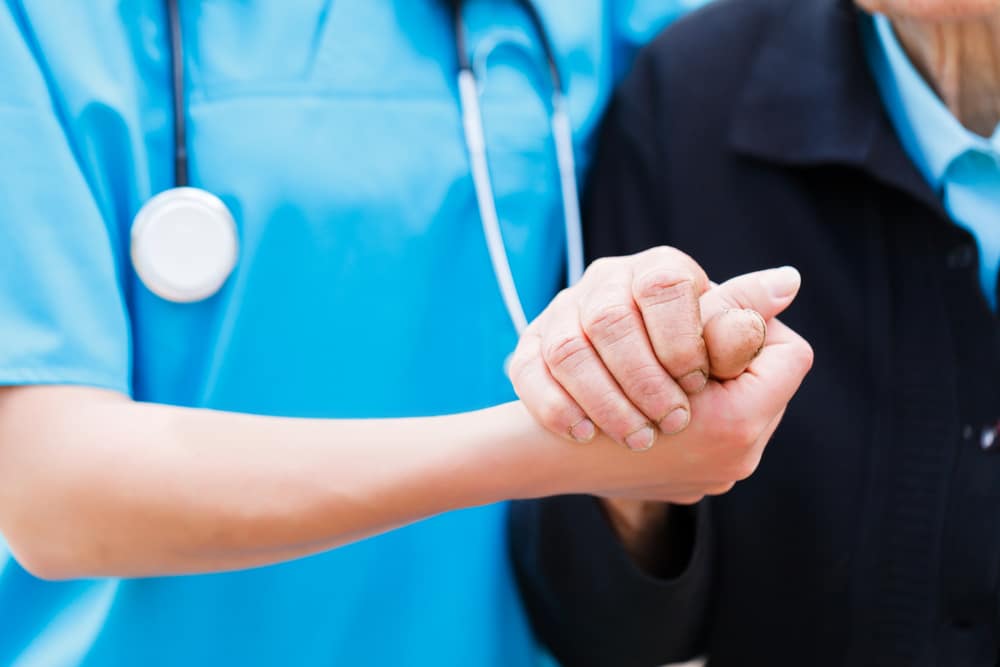
In this section, we will cover the various restorative skills that a nurse aide will carry out as part of their duties.
Backrubs
These are an essential way to help a patient to relax and feel comfortable.
These both cannot be underestimated as part of the restorative process.
As with many other procedures that we’ve already talked about, we won’t go into all the details of how to carry out a backrub because it’s already covered in the coursework.
You should know the correct procedure for the exam, however.
Patient self-care program
When a patient has a debilitating illness or will be in hospital for an extended period of time, self-care programs are a necessity.
These programs show patients how to provide self-care.
Often, the type of self-care program that’s carried out would depend on what weakness the patient has.
Let’s take a patient that’s experienced a stroke and is now weak on their right side.
It’s necessary that they are taught safe and effective use of self-care activities.
Physical therapy, occupational therapy, and nutritional therapy all form part of self-care programs.
Other activities that help a patient live in a community, such as medication management, food preparation, and others are something else a patient may receive help with as part of a self-care program.
Restorative care
Elderly patients that need to meet self-care needs once they are discharged will receive restorative care.
Usually, these patients have been in hospital for a fairly long period of time, for example, someone who has broken a bone.
Restorative care requirements will always be individually based and include daily living activities such as physical therapy, occupational therapy, and nutritional therapy.
Patients that are in hospital for extended periods often need emotional support because depression and anxiety can play a factor.
Home health care
When a patient can go home because they are healthy enough but still need the services of a healthcare provider, they are said to need home health care.
The care needed will vary from patient to patient.
It could include anything from helping them get dressed, carrying on ROM exercises as part of their rehabilitation after an operation, cooking for the patient, or even feeding them.
There are many other examples too such as changing dressings when necessary, taking vital signs, and even shopping for a patient.





